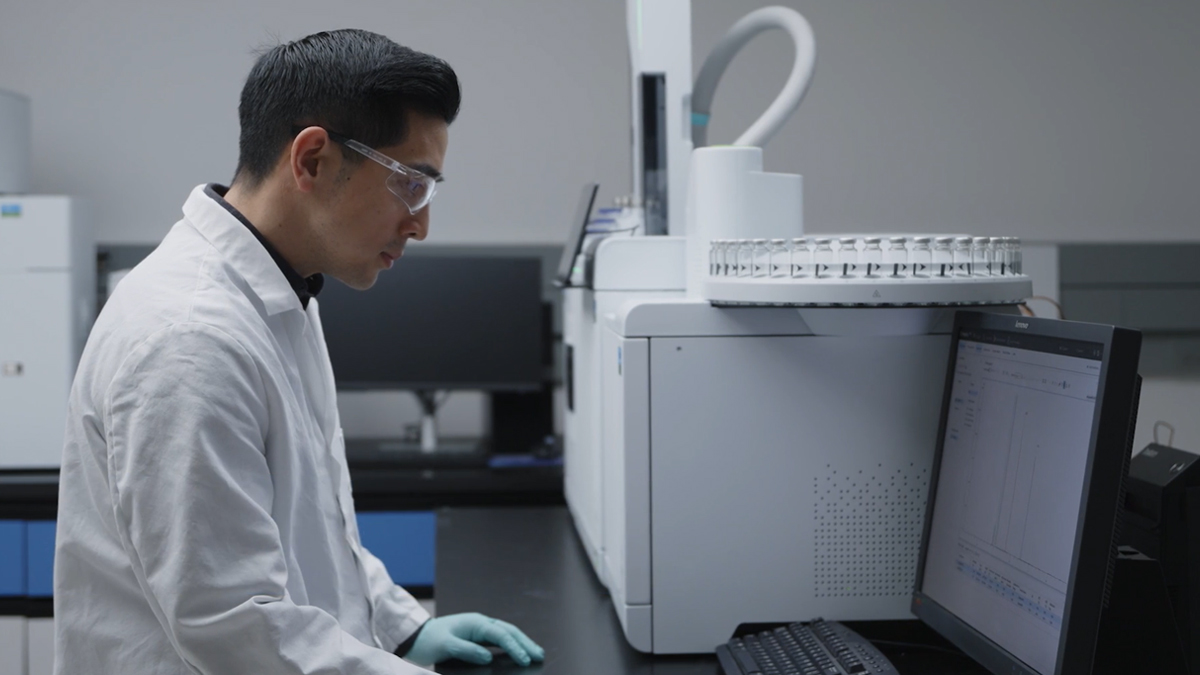Industry 4.0 for USP 467: Unlocking Lab Productivity Potential
In today’s evolving industrial landscape, the concept of Industry 4.0 is revolutionizing various sectors by leveraging digitalization and automation to drive efficiency (read more here). Laboratories – particularly those involved in quality control and compliance of pharmaceutical production with United States Pharmacopeia (USP) 467 requirements – are also embracing this transformative approach
Residual solvent analysis as specified by USP 467 plays a crucial role in ensuring the safety and quality of pharmaceutical products. Residual solvents are volatile compounds that could remain in drug formulations due to manufacturing processes or as impurities from raw materials. These solvents can pose health risks to patients if present above acceptable limits. So, performing USP 467 analysis is essential for pharmaceutical laboratories to accurately detect and quantify residual solvents, enabling compliance with regulatory guidelines and ensuring the integrity and safety of pharmaceutical products.
By adopting Industry 4.0 principles, labs performing USP 467 analyses can expand their opportunities for optimized workflows. Here are some of the main optimization opportunities for labs performing USP 467, focusing on lab efficiency, sustainability, and confidence in the data.
Lab Efficiency
Efficiency is a crucial aspect of any lab environment, especially when dealing with time-critical samples that need to be analyzed to ensure compliance with USP 467 requirements.
Efficiency in the lab can be achieved through better integration of analytical systems. For example, with the PerkinElmer GC 2400™ Platform, the communication between the HS 2400™ Headspace Sampler and GC 2400™ System is integrated, allowing the PPCs, gas flow, and timings to work as if they were a single instrument.
Integration also means connection via remote devices. With connected devices, lab instrumentation can be monitored remotely, providing real-time insights into instrument performance and sequence status. With the GC 2400 Platform, lab staff can monitor the analysis on their mobile devices, enabling them to make informed decisions and address issues promptly, even when they are not physically present in the lab. This access can be managed to follow an individual laboratory’s network permissions based on the company’s policies.
Lab efficiency is also tied to analysis time. For residual solvents in Class I, the analysis normally takes over 60 minutes, although the first 10 minutes are the most critical. However, an optimized approach involving an increased GC oven temperature ramp rate has achieved a 67% decrease in sample runtime, allowing for a 160% increase in sample throughput.
Sustainability
The Industry 4.0 concept also encourages sustainable laboratory practices. A typical challenge for GC labs is gas consumption, specifically helium.
When connecting GC and HS, typically the HS gas flow needs to be calculated manually, in an approximate way, with higher flow than the GC to allow for sample transport. This can cause a large amount of carrier gas waste.
With the GC 2400 Platform, the integrated communication between GC and HS allows for automated precise gas flow, improving user experience and significantly reducing gas waste.
Data Confidence
With the Industry 4.0 concept, data accuracy and confidence are foundational elements that support the rethinking of traditional approaches. Moreover, accurate and reliable data is vital in USP 467 analysis.
The pressure-balanced headspace sampling technology used in the HS 2400 Headspace Sampler is a single-stage injection technique in which sample vapor from the headspace of the sample vial is introduced into the GC column without using a gas syringe, multiport valves, or sample loop. Carrier-gas pressures are precisely regulated to manage transfer, eliminating many of the sources of variability and contamination found in other systems. Because there is no fixed-volume sample loop, users can change sample volumes by simply adjusting the settings in the headspace instrument method, making pressure-balanced sampling more versatile than valve and loop methods.
Pressure-balanced sampling provides several advantages that help achieve data confidence in the analysis of USP 467 including:
- Exact pressurization
- Low dead volumes
- Precision pneumatics
- High repeatability of the system
The Industry 4.0 concept has the potential to revolutionize lab efficiency, sustainability, and data confidence in USP 467 laboratories. By embracing digitalization, automation, and connectivity, labs can optimize workflows, streamline processes, reduce errors, and contribute to environmental sustainability. The application of Industry 4.0 principles in USP 467 labs is an exciting development that holds the promise of increased productivity and cost savings.
Attend this webinar to learn more about the strategies.

